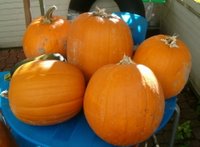
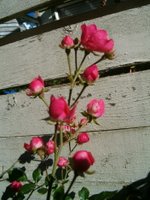
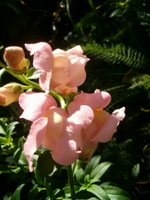


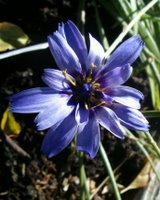

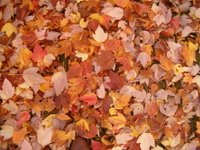
Winterizing your Garden, Nourishing your Soil
No matter how you look at it, Fall is the time to wrap up your garden. Sara has removed most of her perennial flowers and the kids and I helped her pick the remaining vegetables and pulled the tomatoes, potatoes, carrots, squash, cucumber, pumpkin, and zucchini plants out of the ground.
Most of this organic matter found its way into the compost. Some was discarded and burned, since it had signs of mold, mildew, or other pathogens. No matter how many precautions we take, some nasty microbes make their way into our garden. In her mind’s eye, Sara looked at this summer’s arrangement of her flowers and decided to make some changes for next year.
Some perennials self-sow their seeds, so you have to be careful either to deadhead them before they can do that or to pick the seeds yourself and place them in desirable places, rather than letting them fall haphazardly into the ground. Impatients, Calendula, certain Petunias, Hedgehog’s Balloon Flower, Purple Coneflowers, Malva, and California Poppies are all self-sowing plants.
In order to get Sara’s rose bushes ready for frost, we pruned them back to the wood and sprayed them first with Scorpion Juice, in order to inoculate them against many pathogens, including Black Spot. A week later we applied a dormant oil and put four stakes around each bush and tied burlap to them, making sure that it touched the ground so that the cold winds could not freeze the sensitive thin rosewood.
Sara took Hedgehog and Jim to the pumpkin patch and came back with eight huge pumpkins. We’re looking forward to carving them. Our own pumpkins and squash were eaten as roast squash or pumpkin pie. In order to keep the pumpkins from getting molds and mildews, I spray them with Advanced Nutrients Protector. It certainly helps them last longer.
This is the time to make sure that your lawns make it through the winter without too much damage. The trick is to mow them high, leaving two or three inches to encourage root growth. The very same products for root growth that we use on our flowers and vegetables can be used on your lawn. When using Piranha, Tarantula, and Voodoo Juice in conjunction with your regular fertilizer, you might want to use them at half-strength.
Fall is the time to reseed the thin spots on your lawn, as well as to aerate it with a special gardening tool, a rotating one for larger lawns or a hand held one for smaller ones. At this time it is a good idea to top-dress your lawn with a half inch thick layer of compost to build better roots.
If your Fall weather is dry in your part of the continent, keep your lawn well watered. Judging from the generous amounts of rainfall we usually get at this time of year on Canada’s Wet Coast, we’re spared this particular task.
If your self-sown perennial seedlings are popping up all over the place, this is the time to thin them to give them a proper spacing. You should dig up tender summer bulbs such as dahlias and store them away for the winter. Conversely, six weeks before you expect the ground to freeze, you should plant your spring bulbs.
We already planted some, but Sara couldn’t keep herself from going back to the garden store to buy some more hyacinths, daffodils, and tulips. Judging from her enthusiastic description of all the different varieties and colors that she bought, we’re going to have a magnificent spring garden in 2007.
I’m getting her to sprinkle some Heavy Harvest Fall fertilizer around the new bulbs, in order to make sure that they get enough nourishment during their dormancy. The heavy rains usually give them enough moisture, so we don’t have to worry about watering them.
As you know, Iguana Juice Grow and Bloom are our regular fertilizers, and if you look through our Summer’s worth of pictures in this blog you can see the results of using this first class plant nutrient. We also use additives, such as Emerald Shaman (fermented plant food according to Oriental custom) and Carbo Load Liquid, which provides energy boosting carbohydrates to our flowers and vegetables.
You can’t forget about your container plants at this time of year. The soil in the containers freezes much faster than ground soil, so you either have to move them to a very warm spot right next to a warm wall or alternately you have to build a cold frame to protect your container plants.
A three foot by six foot wooden box can be the foundation of your cold frame, covered with a makeshift, plastic coated frame. Place it in a sunny spot against the side of the house or a garage and make sure that your pots have a lot of compost worked into their soil.
Some plants can be brought indoors, but only in a semi-heated room. Full winter indoor heating will kill most outdoor plants. Tender perennials left in the ground, such as lavender, can be protected by mulching. Or transplant them into a pot and bring them indoors.
posted by Tim at
10:48 PM
![]()

0 Comments:
Post a Comment
<< Home